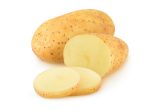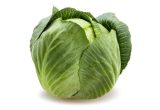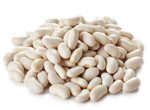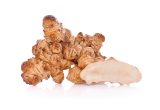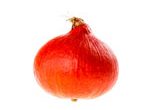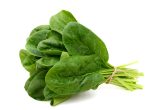Chestnut tree

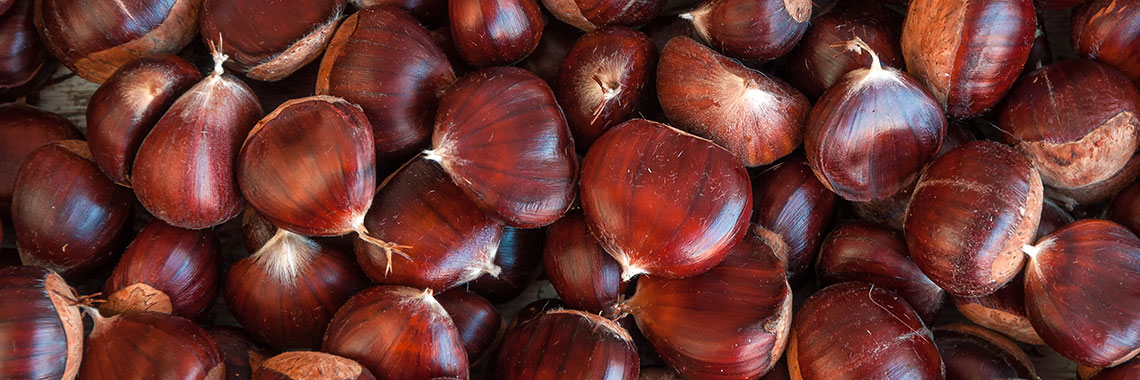
Description
- The chestnut tree (Castanea sativa) belongs to the Fagaceae family.
- It is a tree present in the Mediterranean region in Europe (Chiarini, 2013).
- There are various cultivars, including four belonging to the ‘Castanha da Terria Fri’ (Protected Designation of Origin) from the north-eastern region of Portugal: Aveleira, Boavantura, Judia and Longal (Barreira, 2012).
PHYSICAL AND ORGANOLEPTIC CHARACTERISTICS
- The main aromatic components identified in fresh chestnut are aldehydes and esters, while ketones, furfural and furan are formed in cooked chestnuts due to the Maillard reaction and degradation of saccharides, amino acids and lipids. Aspartic acid, glutamic acid and arginine were found to be the major free amino acids reduced in cooked chestnuts (Li, 2016).
- Cooking method influences the physico-chemical properties of chestnut. Boiling and roasting them significantly reduces their total starch content. Thus, the granular microstructure of chestnut starch is gradually destroyed during heat treatment (Kan, 2016).
- Fifty-eight common aroma components have been identified among boiled, roasted and raw Chinese chestnuts. The main odorants responsible for chestnut aroma are reportedly seventeen volatile substances, including 3-methylbutanal (E)-3-penten-2-one, ethylbenzene, heptanal, benzaldehyde, 2-pentylfuran, octanal benzeneacetaldehyde, (E)-2-octenal, (E,E )-3,5-octadien-2-one, linalool, nonanal, ( E ) -2-nonenal decanal, (Z)-hex-3-en-1-yl hexanoate, trans-β-ionone and (E)-nerolidol (Zhu, 2018).
COMPOSITION CHARACTERISTICS (excluding macronutrients, vitamins and minerals)
- Chestnuts are a source of phenolic components, and more specifically of tannins classified in two major groups: hydrolysable tannins (gallotannins and elleagitannins) and condensed tannins (proanthocyanidins) (Chiarini, 2013).
- Some rare pipecolic acid derivatives, such as N-methylpipecolic acid, 4-hydroxypipecolic acid and 4-hydroxy-N-methylpipecolic acid were identified for the first time in chestnut samples. These alkaloid compounds are thought to have prophylactic properties (Servillo, 2016).
- When cooked (boiled, roasted or fried), their content of starch, soluble protein, sucrose, organic acids and flavonoids is significantly lower than that of fresh chestnuts. However, the content of amylose, fat, crude protein and total polyphenols varies slightly (Li, 2016).
CANNED
The following values are approximate and depend on variety, season, ripeness, cultivation conditions, etc.
Canned chestnuts provide on average 144 calories (Kcal) per 100 g, i.e. 607 kJ. A portion of chestnuts is equivalent to 160 to 180 g, i.e. 230.40 to 259.20 kcal.
COMPOSITION TABLES
For each nutrient, the tables provide information on the content, minimum and maximum values, as well as the percentage of Dietary Reference Values (DRVs) for 100 g net of canned chestnuts (except the table of polyphenols which relates to dried chestnuts).
MACRONUTRIENTS
| Constituent (g) |
Average content
per 100g |
Min-Max per 100g |
Average content
per 30g |
DRV% * |
|---|---|---|---|---|
| Water | 62,70 | 0,10 - NC | 18,81 | - |
| Fibers | 4 | 0,10 - 10 | 1,20 | - |
| Carbohydrates | 28,80 | - | 8,64 | 3,32 |
| Sugars | 3,90 | NC - 10,20 | 1,17 | 1,30 |
| Lipids | 1,40 | 1 - 1,50 | 0,42 | 0,60 |
| Saturated fat | 0,40 | - | 0,12 | 0,60 |
| Protein | 2,31 | 2 - 3,30 | 0,69 | 1,39 |
| Constituent (g) | Amount | Min-Max | DRV% |
|---|---|---|---|
| Water | Ciqual 2020 | - | - |
| Fibers | Ciqual 2020 | - | - |
| Carbohydrates | Ciqual 2020 | - | Règlement (UE) N°1169/2011 du parlement Européen et du conseil du 25 octobre 2011 |
| Sugars | Ciqual 2020 | - | Règlement (UE) N°1169/2011 du parlement Européen et du conseil du 25 octobre 2011 |
| Lipids | Ciqual 2020 | - | Règlement (UE) N°1169/2011 du parlement Européen et du conseil du 25 octobre 2011 |
| Saturated fat | Ciqual 2020 | - | Règlement (UE) N°1169/2011 du parlement Européen et du conseil du 25 octobre 2011 |
| Protein | Ciqual 2020 | - | Règlement (UE) N°1169/2011 du parlement Européen et du conseil du 25 octobre 2011 |
Zoom on carbohydrates
- Chestnuts provide mostly carbohydrates (28.80 g per 100 g), of which only 3.90 g are sugars.
- This amount is higher than the average content of carbohydrates present in nuts (18.13 g per 100 g).
- Chestnuts are rich in type B starch (similar to corn starch) (Cruz, 2013).
- Sugar is present in chestnuts mainly in the form of sucrose (3.90 g per 100 g).
Zoom on fibres
- Chestnuts are a source of fibre* as they contain 4 g per 100 g, i.e. more than 3 g per 100 g of fruit.
- However, they contain less than the average amount found in nuts (9.32 g per 100 g).
Zoom on proteins
- The protein content of chestnuts is 2.31 g per 100 g.
Zoom on lipids
- The oily part of the chestnut provides essential fatty acids, including linoleic acid and linolenic acid, as well as phospholipids, sterols and tocopherols (Zlatanov, 2013).
- In general, chestnuts are low in fat* (1.40 g per 100 g), i.e. less than 3 g per 100 g.
*Regulation (EC) No 1924/2006 of the European Parliament and of the Council of 20 December 2006 on nutrition and health claims made on foods.
MINERALS AND TRACE ELEMENTS
| Constituent |
Average content
per 100g |
Min-Max per 100g |
Average content
per 30g |
DRV% * |
|---|---|---|---|---|
| Calcium (mg) | 21,10 | - | 6,33 | 0,79 |
| Chloride (mg) | 4,50 | - | 1,35 | 0,17 |
| Copper (mg) | - | - | - | - |
| Iron (mg) | < 1 | - | 0,30 | - |
| Iodine (µg) | - | - | - | - |
| Magnesium (mg) | 24,10 | - | 7,23 | 1,93 |
| Manganese (mg) | - | - | - | - |
| Phosphorus (mg) | 51 | - | 15,30 | 2,19 |
| Potassium (mg) | 359 | - | 107,70 | 5,39 |
| Selenium (µg) | - | - | - | - |
| Sodium (mg) | 52,10 | 10,70 - 187 | 15,63 | - |
| Zinc (mg) | - | - | - | - |
| Constituent | Amount | Min-Max | DRV% |
|---|---|---|---|
| Calcium (mg) | Ciqual 2020 | - | Règlement (UE) N°1169/2011 du parlement Européen et du conseil du 25 octobre 2011 |
| Chloride (mg) | Ciqual 2020 | - | Règlement (UE) N°1169/2011 du parlement Européen et du conseil du 25 octobre 2011 |
| Copper (mg) | Ciqual 2020 | - | Règlement (UE) N°1169/2011 du parlement Européen et du conseil du 25 octobre 2011 |
| Iron (mg) | Ciqual 2020 | - | Règlement (UE) N°1169/2011 du parlement Européen et du conseil du 25 octobre 2011 |
| Iodine (µg) | Ciqual 2020 | - | Règlement (UE) N°1169/2011 du parlement Européen et du conseil du 25 octobre 2011 |
| Magnesium (mg) | Ciqual 2020 | - | Règlement (UE) N°1169/2011 du parlement Européen et du conseil du 25 octobre 2011 |
| Manganese (mg) | Ciqual 2020 | - | Règlement (UE) N°1169/2011 du parlement Européen et du conseil du 25 octobre 2011 |
| Phosphorus (mg) | Ciqual 2020 | - | Règlement (UE) N°1169/2011 du parlement Européen et du conseil du 25 octobre 2011 |
| Potassium (mg) | Ciqual 2020 | - | Règlement (UE) N°1169/2011 du parlement Européen et du conseil du 25 octobre 2011 |
| Selenium (µg) | Ciqual 2020 | - | Règlement (UE) N°1169/2011 du parlement Européen et du conseil du 25 octobre 2011 |
| Sodium (mg) | Ciqual 2020 | - | - |
| Zinc (mg) | Ciqual 2020 | - | Règlement (UE) N°1169/2011 du parlement Européen et du conseil du 25 octobre 2011 |
Zoom on minerals and trace elements
- Chestnuts are a source of potassium, as they provide the equivalent of 17.95% of DRVs, i.e. 359 mg per 100 g.
The other minerals are present in quantities representing less than 8% of DRVs.
VITAMINS
| Constituent |
Average content
per 100g |
Min-Max per 100g |
Average content
per 30g |
DRV% * |
|---|---|---|---|---|
| Provitamin A Beta-carotene (µg) | - | - | - | - |
| Vitamin A equivalent (µg) | - | - | - | - |
| Vitamin B1 (mg) | < 0,05 | - | 0,02 | - |
| Vitamin B2 (mg) | 0,07 | - | 0,02 | 1,50 |
| Vitamin B3 (mg) | 1,50 | - | 0,45 | 2,81 |
| Vitamin B5 (mg) | 0,44 | - | 0,13 | 2,20 |
| Vitamin B6 (mg) | 0,22 | - | 0,07 | 4,71 |
| Vitamin B9 (µg) | 58 | - | 17,40 | 8,70 |
| Vitamin C (mg) | - | - | - | - |
| Vitamin E (mg) | < 0,10 | - | 0,03 | - |
| Vitamin K1 (µg) | - | - | - | - |
| Constituent | Amount | Min-Max | DRV% |
|---|---|---|---|
| Provitamin A Beta-carotene (µg) | Ciqual 2020 | - | - |
| Vitamin A equivalent (µg) | Calcul à partir de la valeur Provitamine A Béta-carotène* | - | Règlement (UE) N°1169/2011 du parlement Européen, et du conseil du 25 octobre 2011 |
| Vitamin B1 (mg) | Ciqual 2020 | - | Règlement (UE) N°1169/2011 du parlement Européen et du conseil du 25 octobre 2011 |
| Vitamin B2 (mg) | Ciqual 2020 | - | Règlement (UE) N°1169/2011 du parlement Européen et du conseil du 25 octobre 2011 |
| Vitamin B3 (mg) | Ciqual 2020 | - | Règlement (UE) N°1169/2011 du parlement Européen et du conseil du 25 octobre 2011 |
| Vitamin B5 (mg) | Ciqual 2020 | - | Règlement (UE) N°1169/2011 du parlement Européen et du conseil du 25 octobre 2011 |
| Vitamin B6 (mg) | Ciqual 2020 | - | Règlement (UE) N°1169/2011 du parlement Européen et du conseil du 25 octobre 2011 |
| Vitamin B9 (µg) | Ciqual 2020 | - | Règlement (UE) N°1169/2011 du parlement Européen et du conseil du 25 octobre 2011 |
| Vitamin C (mg) | Ciqual 2020 | - | Règlement (UE) N°1169/2011 du parlement Européen et du conseil du 25 octobre 2011 |
| Vitamin E (mg) | Ciqual 2020 | - | Règlement (UE) N°1169/2011 du parlement Européen et du conseil du 25 octobre 2011 |
| Vitamin K1 (µg) | Ciqual 2020 | - | Règlement (UE) N°1169/2011 du parlement Européen et du conseil du 25 octobre 2011 |
Zoom on vitamins
- Chestnuts are a source of:
- vitamin B9, as they provide the equivalent of 29% of DRVs, i.e. 58 µg per 100 g;
- vitamin B6, as they provide the equivalent of 15.71% of DRVs, i.e. 0.22 mg per 100 g.
- Chestnuts also contain a significant amount of vitamin B3, as they provide the equivalent of 9.38% of DRVs, i.e. 1.50 mg per 100 g.
- The other vitamins are present in quantities representing less than 8% of DRVs.
POLYPHENOLS
| Constituent (mg) |
Average content
per 100mg |
Min-Max per 100mg |
Average content
per 30mg |
|---|---|---|---|
| Flavonoids (mg) | 0,05 | 0,05 - 0,05 | 0,02 |
| of which Flavanols (mg) | 0,05 | 0,05 - 0,05 | 0,02 |
| Phenolic Acids (mg) | 1215,22 | 547 - 1959 | 364,57 |
| of which Hydroxybenzoic acids (mg) | 1215,22 | 547 - 1959 | 364,57 |
| Total polyphenols | 1215,27 | 547,05 - 1959,05 | 364,58 |
| Constituent (mg) | Amount | Min-Max |
|---|---|---|
| Flavonoids | Phenol-Explorer 3.6- Méthode utilisée : Chromatographie | - |
| of which Flavanols | Phenol-Explorer 3.6- Méthode utilisée : Chromatographie | - |
| Phenolic Acids | Phenol-Explorer 3.6- Méthode utilisée : Chromatographie | - |
| of which Hydroxybenzoic acids | Phenol-Explorer 3.6- Méthode utilisée : Chromatographie | - |
| Total polyphenols | Phenol-Explorer 3.6- Méthode utilisée : Chromatographie | - |
Zoom on polyphenols (for raw chestnuts)
- Polyphenols are substances with an antioxidant effect.
- Chestnuts are the fruit and vegetables that contain the most polyphenols. They are mainly in the form of hydroxybenzoic acids, of the phenolic acid family.
The hydroxybenzoic acids present in raw chestnuts are composed of 61% ellagic acid and 39% gallic acid.
Nutrition and health claims
According to the definitions of nutrition claims as set out in Regulation (EC) No 1924/2006 on nutrition and health claims, and in view of the composition of canned chestnuts, the following claims may be used:
NUTRITION CLAIMS OF CHESTNUTS
- Source of fibre (100 g of chestnuts provide more than 3 g of fibre)
- Source of vitamin B9 (100 g of canned chestnuts provide the equivalent of more than 15 % of DRVs)
- Source of potassium (100 g of canned chestnuts provide the equivalent of more than 15% of DRVs)
- Source of vitamin B6 (100 g of canned chestnuts provide the equivalent of more than 15% of DRVs)
HEALTH CLAIMS (for a consumption of 100 g of canned chestnuts)
Folates or vitamin B9
- Folates contribute to:
- maternal tissue growth during pregnancy,
- normal amino acid synthesis,
- normal blood formation,
- normal homocysteine metabolism,
- normal psychological function,
- normal function of the immune system,
- reduction of tiredness and fatigue.
- Folates have a role in the process of cell division.
Potassium
- Potassium contributes to:
- normal functioning of the nervous system,
- normal muscle function,
- maintenance of normal blood pressure.
Vitamin B6
- Vitamin B6 contributes to:
- normal cysteine synthesis,
- normal homocysteine metabolism,
- normal energy-yielding metabolism,
- normal functioning of the nervous system,
- normal protein and glycogen metabolism,
- normal psychological function,
- normal red blood cell formation,
- normal function of the immune system,
- reduction of tiredness and fatigue,
- regulation of hormonal activity.
References
- Agence nationale de sécurité sanitaire de l’alimentation, de l’environnement et du travail. Table de composition nutritionnelle des aliments Ciqual 2020. Consultée le 26/08/2020 depuis le site internet Ciqual https://ciqual.anses.fr/
- Agence nationale de sécurité sanitaire de l’alimentation, de l’environnement et du travail. Table de composition nutritionnelle des aliments Ciqual pour le calcul des apports nutritionnels CALNUT 2020. Consultée le 22/09/2020 depuis le site internet Ciqual https://ciqual.anses.fr/
- Barreira JC, Casal S, Ferreira IC, Peres AM, Pereira JA, Oliveira MB. Chemical characterization of chestnut cultivars from three consecutive years: chemometrics and contribution for authentication. Food Chem Toxicol. 2012;50(7):2311-7.
- Chiarini A, Micucci M, Malaguti M, Budriesi R, Ioan P, Lenzi M, Fimognari C, Gallina Toschi T, Comandini P, Hrelia S. Sweet chestnut (Castanea sativa Mill.) bark extract: cardiovascular activity and myocyte protection against oxidative damage. Oxid Med Cell Longev.2013:471790.
- Cruz BR, Abraão AS, Lemos AM, Nunes FM. Chemical composition and functional properties of native chestnut starch (Castanea sativa Mill). Carbohydr Polym. 2013;94(1):594-602.
- Kan L, Li Q, Xie S, hu J, Wu Y, Ouyang J. Effect of thermal processing on the physicochemical properties of chestnut starch and textural profile of chestnut kernel. Carbohydrate Polymers. 2016;151:614-23.
- Li Q, Shi X, Zhao Q, Cui Y, Ouyang J, Xu F. Effect of cooking methods on nutritional quality and volatile compounds of Chinese chestnut (Castanea mollissima Blume). Food Chemistry. 2016;201:80-6.
- Neveu V, Perez-Jiménez J, Vos F, Crespy V, du Chaffaut L, Mennen L, Knox C, Eisner R, Cruz J, Wishart D, Scalbert A. (2010) Phenol-Explorer: an online comprehensive database on polyphenol contents in foods. Database, doi: 10.1093/database/bap024. Full text (free access)
- Règlement (CE) N° 1924/2006 du Parlement européen et du Conseil du 20 décembre 2006 concernant les allégations nutritionnelles et de santé portant sur les denrées alimentaires.
- Règlement (UE) N°432/2012 de la Commission du 16 mai 2012 établissant une liste des allégations de santé autorisées portant sur les denrées alimentaires, autres que celles faisant référence à la réduction du risque de maladie ainsi qu’au développement et à la santé infantiles.
- Règlement (UE) n°1169/2011 du Parlement européen et du Conseil du 25 octobre 2011 concernant l’information des consommateurs sur les denrées alimentaires, modifiant les règlements (CE) n°1924/2006 et (CE) n°1925/2006 du Parlement européen et de Conseil et abrogeant la directive 87/250/CEE de la Commission, la directive 90/496/CEE du Conseil, la directive 1999/10/CE de la Commission, la directive 200/13/CE du Parlement européen et du Conseil, les directives 2002/67/CE et 2008/5/CE de la Commission et le règlement (CE) n°608/2004 de la Commission.
- Servillo L, Giovane A, Casale R, Balestrieri ML, Cautela D, Paolucci M, Siano F, Volpe MG, Castaldo D. Betaines and related ammonium compounds in chestnut (Castanea sativa Mill.). Food Chemistry. 2016;196:1301-9.
- Warmund MR, Elmore JR, Adhikari K, McGraw S. Descriptive sensory analysis and free sugar contents of chestnut cultivars grown in North America. J Sci Food Agric. 2011;91(11):1940-5.
- Zhu Y, Lv HP, Shao CY, Kang S, Zhang Y, Guo L, Dai WD, Tan JF, Peng QH, Lin Z. Identification des odorants clés responsables de la qualité des arômes de châtaignes des thés verts. Food Res Int. 2018 Juin;108:74-82. tél.: 10.1016/j.foodres.2018.03.026. Epub 2018 12 mars. PMID: 29735103.
- Zlatanov MD, Antova GA, Angelova-Romova MJ, Teneva OT. Lipid composition of Castanea sativa Mill. and Aesculus hippocastanum fruit oils. J Sci Food Agric. 2013;93(3):661-6.





